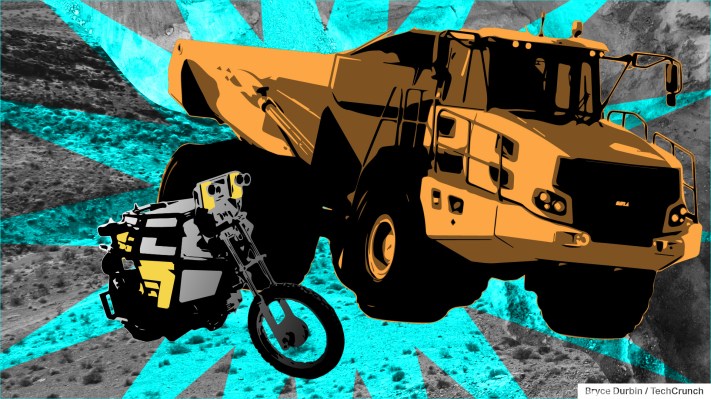It’s been two decades since I developed the first driverless motorcycle, Ghostrider, as part of the DARPA Grand Challenge, an event that is widely viewed as the dawn of autonomous vehicles. That was in 2004, and in 2008, we used a modified Prius to deliver a pizza in San Francisco without a human driver — the first driverless car to navigate public streets.
With such rapid advances, at the time, the consensus was that there would be an autonomous car in every driveway within the next 10 years. Yet, somehow, we’re still years away from realizing that dream.
Much progress has been made since then, and 2024 — the 20th anniversary of Ghostrider — will be another seminal year for autonomous vehicles, especially for off-road industries.
Lessons learned on-road
Eight years ago, my company, Otto, deployed an 18-wheeler that completed the first autonomous commercial delivery, transporting 50,000 cans of Budweiser from Fort Collins, Colorado, to Colorado Springs, a distance of 135 miles. After that successful delivery, we expected to scale quickly. But we soon discovered that driving on the highway introduced a new set of consequences much graver than a robotaxi jamming an intersection in San Francisco. (Note to San Franciscans: Please stop cone-ing the robots.)
The possibilities off-road
Safety remains the paramount metric for autonomous vehicle deployment, yet there has to be industry consensus on how to adequately measure a robotic or human driver’s safety.
One environment in which the dream of autonomous vehicles has turned into reality is off-road, where conditions are often hazardous, and jobs tend to fall into what academics call “the three Ds”: dangerous, dull, and difficult. Robots can outperform human-driven vehicles in efficiency, speed, and safety; after all, an off-site human is a human who can’t be injured. For commercial operations, there is another compelling reason for deploying autonomous vehicles in these conditions: increased profits.
Trucks such as Pronto‘s can be found in environments ranging from humid jungles to the tundra of the Arctic. Robots don’t complain about the heat, humidity, or cold; are never late; and are more efficient overall. For years, companies like ASI, Caterpillar, and Komatsu have deployed autonomous solutions in such industries as agriculture, construction, and mining and have found that robots’ more efficient operations often reduce the environmental impact of these sectors as well.
The road ahead for Tesla
No conversation about self-driving can ignore Tesla. Like Tesla, Pronto’s camera-based technology uses cameras and AI to detect and interpret a robot car’s surroundings, just as a human driver does. I firmly believe this is the correct approach and that in 2024, Tesla will complete the cross-country autonomous road trip it has planned since 2016, making it the second company to drive coast to coast without human intervention.
I also believe that Tesla’s technology will continue to advance. One specific pain point I expect Tesla to announce is what I’ll call “FSD Supercharge”: Drop your car in a queue where it waits and then rolls up to the next available charger, where someone plugs and unplugs your vehicle, and it returns to you fully charged. Pronto trucks are capable of this, and if Tesla wants to do this, I’m happy to offer some Pronto engineering time to get it done.
Safety remains a concern
Safety remains the paramount metric for autonomous vehicle deployment, yet there has to be industry consensus on how to adequately measure a robotic or human driver’s safety.
Companies estimate safety using varying methodologies, like miles per critical intervention (MPCI). This involves a human safety driver riding along to take over when the AV encounters unclear situations. The company then tries to simulate whether a dangerous incident would have occurred without human intervention.
These simulations, however, still need to be improved for real-world driving. As long as models cannot perfectly predict the behavior of a self-driving automobile, on-road testing remains necessary. Yet this testing yields subjective safety assessments across companies based on internal metrics.
To increase transparency, the California DMV logs autonomous vehicle collisions. However, not all incidents are disclosed, and the reports are often incomplete. Companies make individual calls on what constitutes a concerning “intervention.” As a result, policymakers need more definitive safety data to inform regulations and clearance for broad deployment. Progress continues through ongoing testing focused on building competency. But expect backup drivers to remain guardians of the technology until autonomous systems can robustly demonstrate safety.
To recap, 2024 is the Year of the Robot. This technology is no longer in demo mode but being put to work, adding value and leading us into the future.
